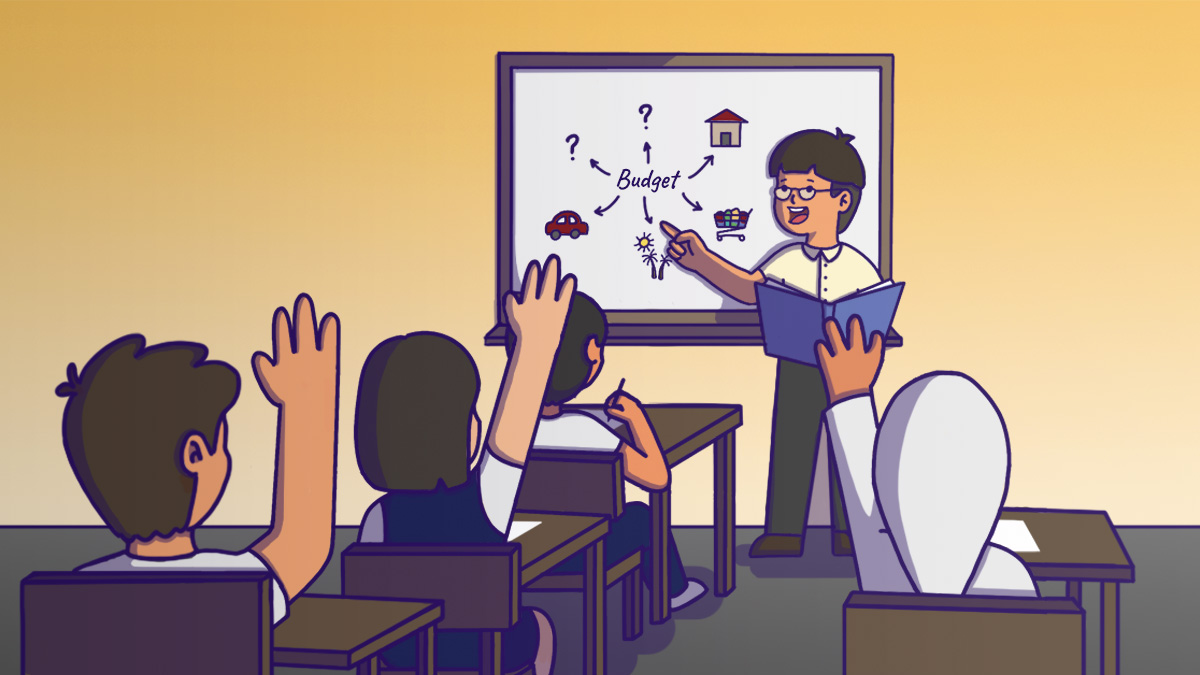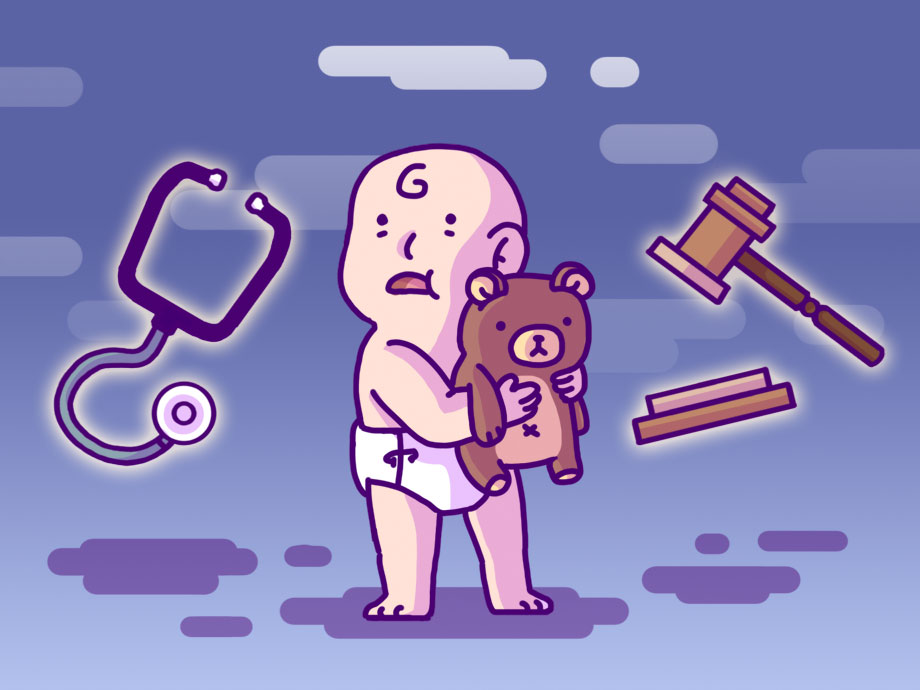Career & Education | Life | Article
How To Introduce Financial Literacy In Schools
by Marcus Lee | 18 Feb 2021 | 7 mins read

In my family, money was never a topic for discussion. The narrative was often to study hard, get a good job, and don’t spend all your money in one place. In school, it was the same, of course. We learned how to count money, divide it, multiply it, or compound it, but we were never taught how to save it, spend it, or invest it.
A recent survey found that Malaysians turn to social media as their top source of financial information.
This got us thinking: Why isn’t financial literacy taught in schools? If money is such an essential part of our lives, why don’t we (and our education institutions) pay more attention to financial education?
After all, it seems like we desperately need financial education. In the same survey mentioned above, 76% of respondents say they are not in control of their money, almost 60% can’t survive for more than three months on their savings, and 46% spend exactly what they earn or more.
Why financial literacy isn’t taught in schools
We spoke to Brandon Liew, CMO of MoneyTree Asia, and Shahril Azuar Jimin, CEO of Maybank Foundation, to get to the bottom of this issue.
The major reason schools lack financial literacy classes is because financial literacy isn’t a subject in the school’s curriculum, according to Brandon and Shahril. And since financial literacy isn’t considered an academic achievement, schools aren’t incentivised to implement any financial literacy programs as students are already burdened with many other subjects.
Both Brandon and Shahril also agree that teachers either lack the training, resources, or aren’t comfortable teaching students about money.
Shahril expands on this, “No one knows how to teach financial literacy well. Very few subject matter experts have a structured program to teach financial literacy to kids in a sustainable way. Most of them are short term camps that happen periodically. In order to teach the subject in schools, we would need a structured program that caters to kids from K-12 (from kindergarten to high school).”
“One of the main reasons why Financial Literacy is not taught in schools is because of (a lack of) teaching materials and resources,” says Brandon. While information is abundant online he says, resources are scattered. There is no one defining a curriculum.
Were there efforts to introduce financial literacy in schools?
If you’re one of the lucky readers to receive a Buku Wang Saku in school, you were already part of the government’s efforts to introduce financial literacy in schools. The prolific Malaysian cartoonist, Lat illustrated the book, which contained financial lessons as well as a journal for students to record their savings and spending.
It was first introduced in schools in 1999 and they’ve been circulated to 15.5 million students since. Besides this, the government also encourages corporations to conduct financial literacy activities in schools as part of their CSR activities.
One such initiative is the Cashville Kidz program conducted by Maybank Foundation in partnership with MoneyTree. We looked at the program to see if it can act as a framework for all schools in Malaysia to implement a financial literacy program.
How to introduce financial literacy in schools
The Cashville Kidz program has been deployed in 6 countries around ASEAN, i.e., Cambodia, Myanmar, the Philippines, Indonesia, Singapore, and Malaysia. In Malaysia, it has been used to train over 2,000 teachers in over 900 schools.
The curriculum rests on three pillars:
- An animated series for students to watch and learn different money lessons
- A train-the-teacher program with resources that can ensure that once a teacher is trained, the school and its students can benefit for years to come
- A yearly awards platform that recognizes students and educators that have excelled in the program.
Shahril says that the program focuses on what existing solutions lack, which is a comprehensive program that teaches key financial concepts, nurtures good financial habits, and trains students against negative social influences.
Crucially, the program is measurable, as all students will undergo pre and post assessments to measure their level of financial literacy after the program. This measurement will allow policymakers to assess the efficacy of this program for mass implementation.
While Cashville Kidz is targeted to kids aged 9 – 12, Brandon outlines a simple guideline for teaching different age groups:
- 8 – 10 years old: to learn about spending responsibly, prioritizing needs over wants, managing their money responsibly through budgeting
- 12 – 14 years old: understand income and expenses, scarcity and opportunity costs, career and choices, digital banking, and security
- 15 – 18 years old: learn about passive income, investments, entrepreneurship, risk management
But what’s the best way to introduce these techniques to schools on a mass scale? Brandon says that coming up with a curriculum that’s engaging, easy to deploy, teachable, is difficult.
He adds “Another mental barrier that needs to be addressed is how to find time to fit in a ‘non-academic’ subject in an already tight schedule. There is a need for a gradual move towards infusing important life skills (through skill-based learning) in order to achieve a more balanced education.”
What else is being done to promote financial literacy?
In 2019, the Financial Education Network, an inter-agency platform promoting sustainable and effective financial education initiatives, developed the National Strategy for Financial Literacy (2019 – 2023). The strategy outlines the need for financial literacy in schools through a five-year roadmap.
Since its inception, the network has released videos and webinars tackling issues like money and your mental health and insurance. The network also launched a financial literacy month in October 2020.
Time will tell if the agencies will come together to introduce financial literacy in school curriculums but it’s good to know that there’s already a framework in place. We just need a champion in office who can bring it into parliament.
How to jumpstart your child’s financial education
Even if financial literacy isn’t taught in schools right now, that doesn’t mean you can’t already teach your children about money. There are multiple apps that gamify financial education. Once such app is Dumo, launched in 2020. We spoke to Tze Wye, CEO Digital Bank and creator of Dumo, to get his take on the subject.
As a parent himself in the time of COVID, he notes that kids now aren’t engaged and motivated to learn about money so he intends to tackle this issue with his app. Dumo (a play on “do more”) engages kids by using a points and rewards system.
The more you learn on the app, the more points you gain. You can then spend these points on an in-app auction house for real items like vouchers and toys. To enable monitoring and to encourage learning, parents need to download the app as well. That way they can see how much their children have learnt on the app.
The system works by providing positive feedback when you learn something new and behaviour modification when you redeem the points. Basically, if you study, you get points, once you have points, you can buy something, if you save your points, you can buy higher ticket items.
A 2019 study in Thailand revealed that gamification can be a powerful way to leverage on both experience and motivation. Through a pattern of positive feedback, achievement, and persuasive behavior, the gamified activities can influence financial behaviours.
You can also teach your children how to manage money by using practical everyday things. The key is to make managing money a fun and engaging experience for your children.
Can we become a financially-literate nation?
According to Brandon, “To introduce a program with these qualities would involve re-training of teachers and a different approach to curriculum design – an initiative that would take time and resources to embark on. That remains a challenge.”
Shahril adds “Changing the education system isn’t something that can be done overnight. It requires time – time to draw up the education framework, train the teachers, develop the content, identifying partners to work with, and so on.
But we are headed in the right direction. Some countries are starting to move very rapidly into this space as they understand the importance of financial literacy for the future well-being of the country’s economy.”














